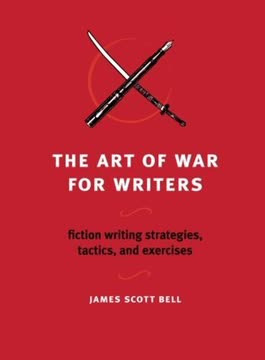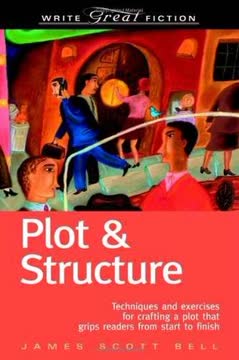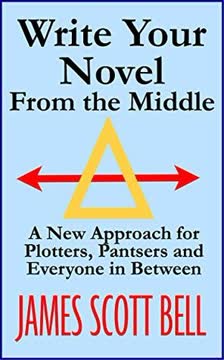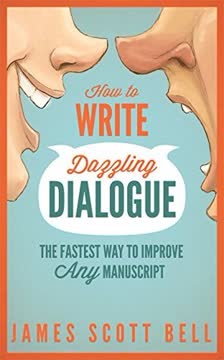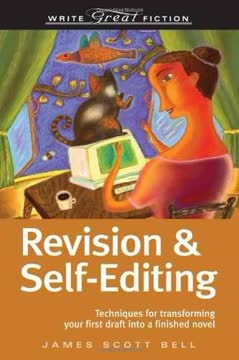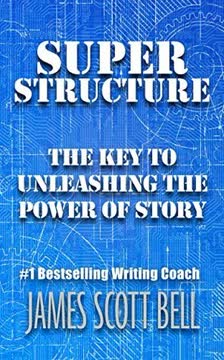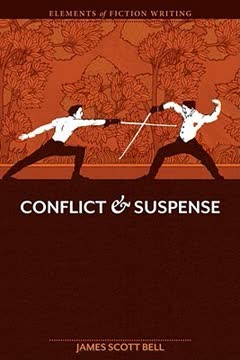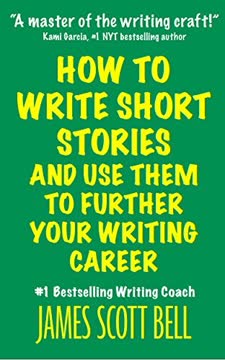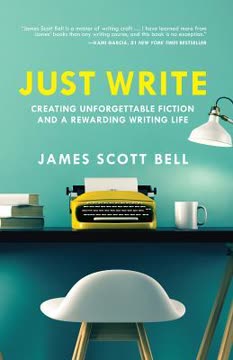Key Takeaways
1. Master the Mental Game: Overcome Fear and Self-Doubt
"Do the thing you fear, and the death of fear is certain."
Embrace fear as motivation. Fear is a natural part of the writing process, but it shouldn't paralyze you. Instead, use it as a catalyst for action. When anxiety strikes, channel it into your writing. Set challenging goals that push you out of your comfort zone, and take immediate steps towards achieving them.
Develop mental resilience. Cultivate a growth mindset by viewing rejections and criticisms as opportunities for improvement rather than personal failures. Remember that even successful authors face self-doubt. Create a support system of fellow writers or mentors who can offer encouragement and constructive feedback.
Focus on what you can control. Instead of worrying about competition or market trends, concentrate on producing your best work. Develop a writing improvement program, keeping a notebook to track your progress and gather inspiration. Regularly review and update your goals to maintain momentum and motivation.
2. Craft Compelling Characters and Dialogue
"The key to reader bonding is falling in love with the Lead."
Create multi-dimensional characters. Develop characters with grit, wit, and "it" factor – inner strength, mental acuity, and an intriguing quality that draws readers in. Use techniques like the voice journal to explore your characters' depths, allowing them to speak freely in stream-of-consciousness writing.
Master the art of dialogue. Write dialogue that serves as a compression and extension of action, always tied to a character's objective in a scene. Avoid small talk and make every line count. Consider writing dialogue-only scenes first, then filling in the blanks to discover unexpected character dynamics.
Show, don't tell. Reveal character through actions, reactions, and internal struggles rather than exposition. Use the "RUE" principle – Resist the Urge to Explain – to keep your scenes moving with deliberate speed and maintain reader engagement.
3. Develop a Disciplined Writing Routine
"Write hard, write fast, and the fire of creation will be yours."
Establish a consistent writing schedule. Set a daily or weekly word count goal and stick to it. Many successful authors, like Stephen King, write a set number of words every day. This discipline helps build momentum and overcome writer's block.
Create a dedicated writing space. Designate an area solely for writing to signal to your brain that it's time to work. This could be a home office, a corner of a room, or even a favorite café.
Embrace the power of routine. Develop rituals that prepare you for writing:
- Start at the same time each day
- Use specific music or ambient sounds
- Begin with a brief meditation or journaling session
Take strategic breaks. Incorporate a "writing Sabbath" – one day off per week to recharge your creative batteries. This can actually increase overall productivity by preventing burnout.
4. Perfect Your Opening and Keep Readers Hooked
"Speed is the essence of the opening."
Hook readers immediately. Your opening must grab attention from the first line. Create a disturbance in the character's world, introduce conflict, or pose an intriguing question that demands answers.
Avoid common pitfalls:
- Don't start with lengthy descriptions of weather or setting
- Steer clear of dreams or waking-up scenes
- Minimize backstory and exposition in the first chapter
Use progressive revelation. Gradually unveil information about characters and plot to maintain suspense and keep readers turning pages. Leave unanswered questions that compel the audience to read on.
End chapters with momentum. Craft chapter endings that create a sense of urgency or curiosity, making it difficult for readers to put the book down. Use cliffhangers, revelations, or new complications to drive the story forward.
5. Balance Plot and Character Development
"There are two levels of story. Various terms are used to describe them, but, for shorthand, I'll use Outer and Inner."
Intertwine external and internal conflicts. Develop your plot (outer story) alongside character growth (inner story). Ensure that external events challenge and change your characters, while their internal struggles influence their actions and decisions.
Create a strong story structure:
- Establish a clear premise and test its viability
- Outline key plot points and character arcs
- Use techniques like the "Q Factor" to provide motivation at crucial moments
Maintain narrative tension. Keep readers engaged by consistently raising the stakes for your characters. Introduce unexpected twists, moral dilemmas, or escalating challenges that test your protagonists' resolve and force them to grow.
Use backstory judiciously. Reveal character history and motivations gradually, weaving them into the narrative through dialogue, memories, or brief flashbacks. Avoid info-dumps that slow the pace of your story.
6. Revise and Edit with Precision
"Edit slow, edit tough, with a process both clear and cool."
Develop a systematic revision process. Create a checklist or schedule for tackling different aspects of your manuscript:
- Plot and structure
- Character development and consistency
- Pacing and tension
- Dialogue and voice
- Description and sensory details
- Grammar and style
Use the "cold read" technique. Set your manuscript aside for a period of time (weeks or months, if possible) before revising. This distance allows you to approach your work with fresh eyes and identify weaknesses more easily.
Seek outside feedback. Enlist beta readers, critique partners, or professional editors to provide objective input on your work. Be open to constructive criticism and use it to strengthen your writing.
Polish your prose. Focus on tightening your language, eliminating redundancies, and enhancing clarity. Read your work aloud to catch awkward phrasing or rhythm issues.
7. Navigate the Publishing Industry Strategically
"Because a bad agent is worse than no agent."
Research the market thoroughly. Understand current trends in your genre, but don't chase them at the expense of your unique voice. Identify potential agents and publishers who specialize in your type of work.
Craft a compelling query package:
- Write a concise, attention-grabbing query letter
- Develop a strong synopsis that captures your story's essence
- Polish your first chapters to perfection
Be professional in all interactions. Follow submission guidelines meticulously, personalize your queries, and maintain a courteous demeanor even in the face of rejection.
Consider your options. Weigh the pros and cons of traditional publishing versus self-publishing. Each path has its advantages and challenges, so choose the one that aligns best with your goals and resources.
8. Build Your Writing Career as a Business
"You are a business, and your books are the product."
Develop a long-term career strategy. Set both short-term and long-term goals for your writing career. Create a vision statement that encapsulates your aspirations and revisit it annually to stay on track.
Diversify your income streams. Consider multiple avenues for monetizing your writing:
- Book sales (print, ebook, audiobook)
- Speaking engagements
- Teaching or workshops
- Freelance writing or editing
- Merchandise or adaptations
Build your author platform. Establish a professional online presence through a website, blog, and social media. Engage with readers and fellow writers to build a community around your work.
Invest in your craft. Continuously improve your skills through:
- Reading widely in and outside your genre
- Attending writing conferences and workshops
- Participating in critique groups or masterminds
- Studying craft books and taking courses
Manage your finances wisely. Keep accurate records of income and expenses, set aside money for taxes, and consider working with a financial advisor who understands the unique challenges of a creative career.
Last updated:
FAQ
1. What is "The Art of War for Writers" by James Scott Bell about?
- Field Manual for Writers: The book is a practical guide for fiction writers, structured as a "field manual" inspired by Sun Tzu’s "The Art of War," offering strategies, tactics, and exercises for success in the writing and publishing world.
- Three-Part Structure: It is divided into three main sections: Reconnaissance (the mental game), Tactics (craft and technique), and Strategy (the business and career side).
- Focus on Long-Term Success: Bell emphasizes not just getting published, but building a sustainable, professional writing career.
- Actionable Advice: The book is filled with concise, actionable tips, anecdotes, and exercises designed to help writers improve their craft and navigate the publishing industry.
2. Why should I read "The Art of War for Writers" by James Scott Bell?
- Comprehensive Yet Concise: The book distills decades of writing and publishing experience into short, focused entries that are easy to digest and apply.
- Addresses All Writer Levels: Whether you’re a beginner or a seasoned novelist, Bell’s advice covers mental preparation, craft improvement, and business acumen.
- Realistic and Encouraging: Bell is honest about the challenges of the writing life but offers encouragement, practical solutions, and motivation to keep going.
- Unique Perspective: By framing writing as a “battle,” the book provides a fresh, strategic approach to overcoming obstacles and achieving writing goals.
3. What are the key takeaways from "The Art of War for Writers"?
- Mental Discipline is Crucial: Success in writing starts with mental resilience, self-motivation, and the ability to handle rejection and criticism.
- Craft Matters: Constant improvement in storytelling, character development, and scene construction is essential—good enough isn’t good enough anymore.
- Business Savvy Required: Writers must understand the publishing industry, treat writing as a business, and develop professional habits and relationships.
- Persistence and Adaptability: The path to publication is unpredictable; adaptability, perseverance, and a willingness to learn are vital for long-term success.
4. How does James Scott Bell structure "The Art of War for Writers" and why?
- Three-Part Framework: The book is organized into Reconnaissance (mental game), Tactics (craft), and Strategy (business/career), mirroring military planning.
- Short, Focused Entries: Each section contains brief, numbered lessons or observations, making it easy to reference and revisit specific topics.
- Progressive Complexity: The structure moves from foundational mindset issues to advanced craft techniques and finally to career and business strategies.
- Inspired by Sun Tzu: The format and tone are modeled after Sun Tzu’s aphoristic style, emphasizing clarity, brevity, and actionable wisdom.
5. What are the most important mental strategies for writers according to "The Art of War for Writers"?
- Develop Discipline: Set and meet a weekly word quota, as consistency and output are foundational to improvement and success.
- Embrace Resilience: Learn to handle rejection, criticism, and setbacks without losing motivation or self-belief.
- Avoid Ego Traps: Keep your ego in check—don’t let praise inflate you or criticism deflate you; focus on the work itself.
- Stay Hungry and Curious: Maintain a sense of purpose, passion, and a willingness to learn and adapt throughout your career.
6. What are James Scott Bell’s top craft tips for fiction writers in "The Art of War for Writers"?
- Write Fast, Edit Slow: Draft quickly to maintain creative momentum, then revise methodically and thoroughly for quality.
- Test Your Premise: Ensure your story idea is strong, marketable, and emotionally compelling before investing months in writing.
- Focus on Character: Make readers fall in love with your Lead by giving them grit, wit, and emotional depth, and by revealing both inner struggle and conflict.
- Scene Construction: Every scene should have a clear purpose, conflict, and emotional impact—aim for three great scenes and no weak ones.
7. How does "The Art of War for Writers" advise handling writer’s block and creative obstacles?
- Break Through the Wall: Use creative exercises like writing anything (even unrelated material), changing your environment, or playing music to spark new ideas.
- Use a Voice Journal: Let your characters speak in stream-of-consciousness to discover their voice and motivations.
- Randomization Techniques: Open a thesaurus or novel at random and use the first word or line you see as a prompt to generate new directions.
- Physical Activity: Take walks or exercise to stimulate subconscious problem-solving and idea generation.
8. What does James Scott Bell say about the business side of writing in "The Art of War for Writers"?
- Treat Writing as a Business: View yourself as a business and your books as products; publishers want writers who can deliver value and build readerships.
- Set Goals and Plan: Create vision statements, set measurable goals, and regularly review and adjust your plans for career growth.
- Professional Networking: Build relationships based on reciprocity, not desperation; be professional in all interactions with agents, editors, and peers.
- Understand Publishing Realities: Recognize that publishing is driven by profit, and success requires both artistic and commercial awareness.
9. What are the most effective ways to improve as a writer, according to "The Art of War for Writers"?
- Deliberate Practice: Design a personal improvement program, including studying exemplars, collecting feedback, and targeted self-study.
- Keep a Writing Notebook: Record insights, feedback, and study notes to track progress and focus on weak areas.
- Finish What You Start: Completing novels teaches more than endless tinkering; each finished project is a step forward.
- Continuous Learning: Read widely—both fiction and books on writing—and always seek new techniques and perspectives.
10. How does "The Art of War for Writers" address the importance of originality and avoiding clichés?
- Flip the Obvious: When you catch yourself reaching for a cliché, deliberately choose the opposite or a fresh alternative.
- Progressive Revelation: Reveal character and plot details gradually to maintain mystery and reader engagement.
- Active Backstory: Integrate backstory into active scenes rather than dumping exposition, keeping the narrative dynamic.
- Fresh Scenes and Dialogue: Use exercises like writing scenes in pure dialogue or summarizing small talk to avoid dull, predictable writing.
11. What are some of the best quotes from "The Art of War for Writers" and what do they mean?
- "Write a quota of words every week": Emphasizes the importance of consistent output and discipline over waiting for inspiration.
- "Nobody knows anything": A reminder from William Goldman that publishing success is unpredictable, so focus on your own work.
- "A small daily task, if it be really daily, will beat the labors of a spasmodic Hercules": Consistency trumps sporadic bursts of effort.
- "Three great scenes, and no weak ones": Quality over quantity—memorable fiction is built on standout moments and no filler.
12. How does "The Art of War for Writers" help writers deal with rejection, criticism, and the emotional rollercoaster of the writing life?
- Normalize Rejection: Rejection is part of every writer’s journey; even famous authors faced countless setbacks before success.
- Turn Criticism into Strength: Analyze feedback objectively, extract useful lessons, and use them to improve your craft.
- Separate Self from Work: Don’t equate rejection of your writing with rejection of you as a person; maintain perspective and resilience.
- Celebrate Progress: Reward yourself for meeting goals and milestones, and remember that persistence is often the key differentiator in a writing career.
Review Summary
The Art of War for Writers receives mostly positive reviews for its practical advice on writing craft and the publishing industry. Readers appreciate Bell's no-nonsense approach, concise tips, and motivational tone. Many find it useful for writers at various stages, from beginners to experienced authors. The book is praised for its easy-to-digest format and valuable insights on the mental aspects of writing. Some criticize its focus on traditional publishing and lack of depth on certain topics, but overall, it's considered a worthwhile addition to a writer's reference collection.
Similar Books
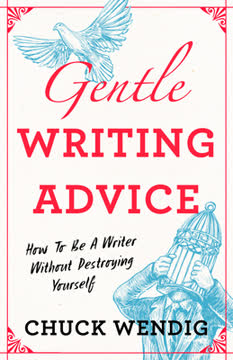
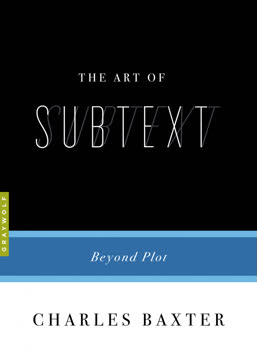
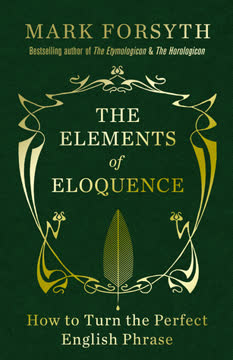
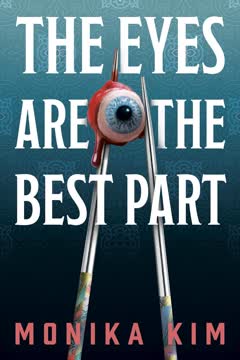
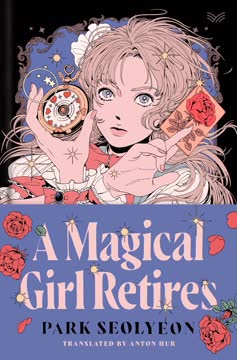
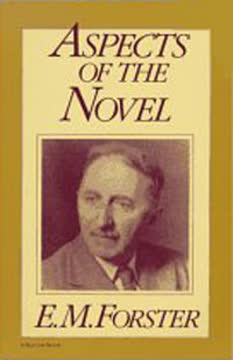
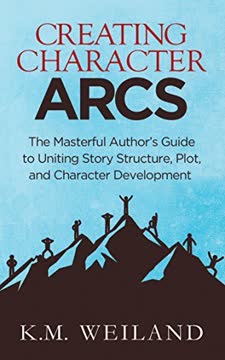
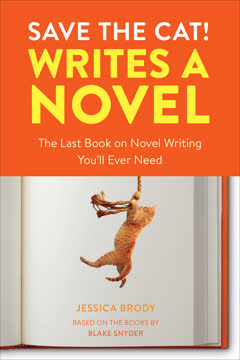
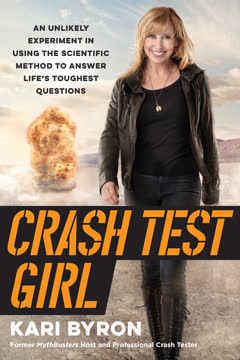
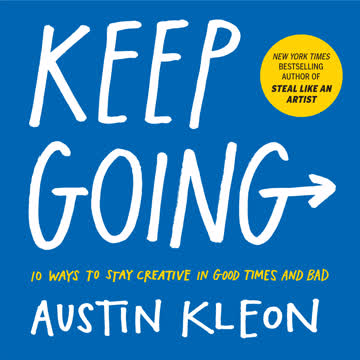
Download PDF
Download EPUB
.epub digital book format is ideal for reading ebooks on phones, tablets, and e-readers.
